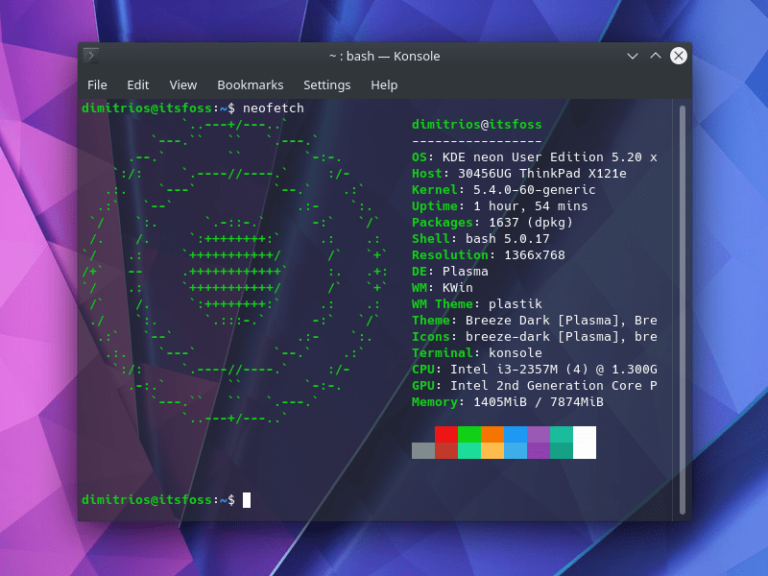
On April 30th, 1993, the World Wide Web (WWW) became of public domain. CERN, the European Organization for Nuclear Research, published a statement that made it available to everyone with an open license.
The WWW was invented by Tim Berners-Lee in 1989. At that time, there were other information systems competing with the web project, such as Gopher or WAIS. However, as the World Wide Web technology was free, open and simple, its adoption and development was unstoppable.
How did the WWW start?
As mentioned above, the World Wide Web was invented by the British physicist Tim Berners-Lee in 1989, while working at CERN. The project was originally born to find a solution to share information more easily among physicists in universities and institutes worldwide. In 1990, he wrote the first web browser.
As explained in the CERN’s webpage about the birth of the web, the first website in the world was hosted in Berners-Lee’s NeXT computer and described the basic features of the WWW. It explained, for instance, how to set up a server and how to access documents. In 2013, CERN started a project to restore this first ever website, in order to preserve the digital assets related to the origins of the web.
While building the web, Berners-Lee also developed other essential technologies — widely known nowadays, for instance: the Uniform Resource Locator (URL), the Uniform Resource Identifier (URI), the Hypertext Markup Language (HTML) and the Hypertext Transfer Protocol (HTTP). In the following webpage, you can read the statement of the release of the web into the public domain.
The World Wide Web and the Internet
The World Wide Web has transformed the lives of millions of people worldwide, which use it daily to interact on the Internet. Both the WWW and the Internet are so interlinked and have become so present in our daily lives that many people often use both terms equally. Although they do not mean the same thing.
On one side, the WWW or “the web” is an information system where documents and other resources are accessible over the Internet, identified by URLs, which can be interlinked among them by hyperlinks. Users access web resources via the application-level Internet protocol HTTP or HTTPS. The HTTP protocol started at version 0.9 in 1991 and the current version is HTTP 3.0.
On the other side, the Internet is a global system of interconnected networks — public, private, academic, government and business. The Internet is also commonly known as the “network of networks” and infrastructures such as Internet Exchange Points help accelerate communications among all of them.
State of the Web
The web is constantly changing, as shown in the State of the Web report by HTTP Archive and other statistics about the usage of different technologies, protocols, etc. Let’s review some facts that reflect how the web evolves as new trends and technologies appear.
HTTPS implementation
According to the HTTP Archive’s State of the Web report, the implementation of HTTPS has considerably grown since 2016, from above 21% to about 94% in 2023.
| Average HTTPS implementation on desktop version | Average HTTPS implementation on mobile version | |
| January 2016 | 24% | 21.8% |
| January 2017 | 36.5% | 36.6% |
| January 2018 | 57.9% | 58.7% |
| January 2019 | 75.5% | 74.1% |
| January 2020 | 83.6% | 82.4% |
| January 2021 | 89.4% | 88.5% |
| January 2022 | 93.6% | 92.6% |
| January 2023 | 94.5% | 93.8% |
HTTP/3
According to data about the use of HTTP/3 on W3Techs, almost 26% of websites already use HTTP/3, as of May 2023.
This percentage varies significantly according to the HTTP Archive’s report; 18.8% on desktop and 19.5% on mobile. However, this report only presents the percentage of websites supporting HTTP/3 — to ensure accuracy in relation to the methodology used.
Web page weight
According to the HTTP Archive’s report, web pages continue to get heavier. Desktop web pages are about 1.5 Mb heavier in 2023 compared to data from 2013. Mobile web pages are about 1.6 Mb heavier.
| Average web page size on desktop version | Average web page size on mobile version | |
| January 2011 | 0.48 Mb | – |
| January 2012 | 0.65 Mb | 0.29 Mb |
| January 2013 | 0.83 Mb | 0.40 Mb |
| January 2014 | 1.08 Mb | 0.56 Mb |
| January 2015 | 1.23 Mb | 0.75 Mb |
| January 2016 | 1.45 Mb | 0.90 Mb |
| February 2017 | 1.48 Mb | 1.33 Mb |
| January 2018 | 1.77 Mb | 1.57 Mb |
| January 2019 | 1.84 Mb | 1.67 Mb |
| January 2020 | 1.97 Mb | 1.77 Mb |
| January 2021 | 2.04 Mb | 1.88 Mb |
| January 2022 | 2.17 Mb | 1.96 Mb |
| January 2023 | 2.29 Mb | 2 Mb |
An excessive page size is one of the reasons that can slow down a page loading speed, negatively affecting user experience. However, the impact weight has on load times is mitigated thanks to improvements in networking, such as fiber optics, 4G and 5G.
Image size
Image size is another relevant aspect for reducing web page load times. On this matter, the HTTP Archive’s report shows valuable insights. While the number of images per page has dropped over the past decade, the weight of images has more than doubled over the same period of time.
Number of images per page
The number of images requested has halved on desktop versions over the last decade. However, it has remained the same on mobile — except for a considerable increase between 2015 and 2021.
| Average number of image requests on desktop version | Average number of image requests on mobile version | |
| January 2011 | 38 | – |
| January 2012 | 42 | 22 |
| January 2013 | 42 | 24 |
| January 2014 | 42 | 24 |
| January 2015 | 40 | 26 |
| January 2016 | 41 | 27 |
| February 2017 | 41 | 36 |
| January 2018 | 40 | 36 |
| January 2019 | 31 | 29 |
| January 2020 | 30 | 27 |
| January 2021 | 26 | 25 |
| January 2022 | 25 | 22 |
| January 2023 | 21 | 19 |
Transfer size of all images per page
From 2013 to 2023, the size of all the images requested by the page has more than doubled on desktop and it is about 4 times bigger on mobile.
| Average size of the sum of images on a page on desktop version | Average size of the sum of images on a page on mobile version | |
| January 2011 | 0.23 Mb | – |
| January 2012 | 0.33 Mb | 0.14 Mb |
| January 2013 | 0.44 Mb | 0.20 Mb |
| January 2014 | 0.55 Mb | 0.27 Mb |
| January 2015 | 0.65 Mb | 0.36 Mb |
| January 2016 | 0.74 Mb | 0.42 Mb |
| February 2017 | 0.83 Mb | 0.71 Mb |
| January 2018 | 0.88 Mb | 0.78 Mb |
| January 2019 | 0.92 Mb | 0.84 Mb |
| January 2020 | 0.97 Mb | 0.87 Mb |
| January 2021 | 0.95 Mb | 0.90 Mb |
| January 2022 | 0.96 Mb | 0.86 Mb |
| January 2023 | 0.99 Mb | 0.84 Mb |
Web servers usage
The 3 most popular web servers are Nginx, Apache and Cloudflare Server, according to W3Techs’ data. Nginx, Apache and OpenResty, according to Netcraft’s data.






